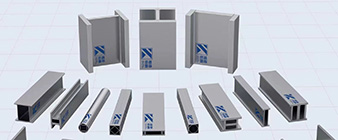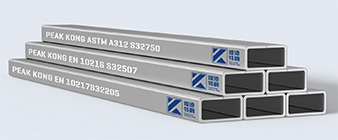Structural classification:
Both 316L and EN 1.4404 stainless steel belong to the austenitic stainless steel family, which is known for its excellent corrosion resistance, ductility and weld resistance.
These grades are commonly used in structural applications due to their favorable mechanical properties and corrosion resistance.
Chemical composition:
316L and EN 1.4404 have similar chemical compositions, the main difference is that EN 1.4404 (2-3% MO) has a slightly higher molybdenum content compared to 316L (2-3% MO).
The higher molybdenum content in EN 1.4404 enhances its resistance to dent and crevice corrosion.
Mechanical Properties:
Both 316L and EN 1.4404 stainless steels have excellent mechanical properties, including high tensile and yield strengths and good ductility.
The mechanical properties of these grades are ideal for structural applications such as load-bearing beams, columns and frames.
Corrosion resistance:
EN 1.4404 stainless steel offers better corrosion resistance than 316L, especially in chloride-containing environments and in applications exposed to more aggressive chemicals.
This makes EN 1.4404 a better choice for structural applications in marine, coastal and highly corrosive industrial environments.
Application:
316L stainless steel is widely used in structural applications such as:
Construct facades and canopies
Bridges and Overpasses
Industrial facilities (e.g. chemical plants, food processing plants)
Architectural and decorative elements
EN 1.4404 stainless steel is often preferred in structural applications in more corrosive environments, such as:
Offshore and Coastal Structures
Chemical Processing Plant
Pharmaceutical and Food Processing Facilities
Marine and coastal infrastructure (e.g., marinas, marinas)
The choice of 316L and EN 1.4404 stainless steel for structural applications depends on the specific environmental and performance requirements of the project. Where enhanced corrosiveness is critical, EN 1.4404 may be the preferred option, while for less corrosive environments 316L may be a more cost-effective option. In both cases, austenitic stainless steel grades offer excellent structural properties and durability.
-
 2024-9-25 1.4404 stainless steel in nuclear power of Innovative application
2024-9-25 1.4404 stainless steel in nuclear power of Innovative application -
 2024-4-15 BS EN 10088-3 chemical composition tables
2024-4-15 BS EN 10088-3 chemical composition tables -
 2024-9-20 Laser welding fabrication process of Ti Gr 1 / 3.7025
2024-9-20 Laser welding fabrication process of Ti Gr 1 / 3.7025 -
 2024-9-16 How does the use of 2205 duplex stainless steel in bridge construction compare to traditional materials like carbon steel?
2024-9-16 How does the use of 2205 duplex stainless steel in bridge construction compare to traditional materials like carbon steel? -
 2024-9-21 Application of S690 steel structures in super high-rise buildings?
2024-9-21 Application of S690 steel structures in super high-rise buildings? -
 2024-9-27 31 / 1.4562 stainless steel structural sections
2024-9-27 31 / 1.4562 stainless steel structural sections -
 2024-9-16 2507 super duplex stainless steel Hollow Structural Sections
2024-9-16 2507 super duplex stainless steel Hollow Structural Sections



